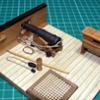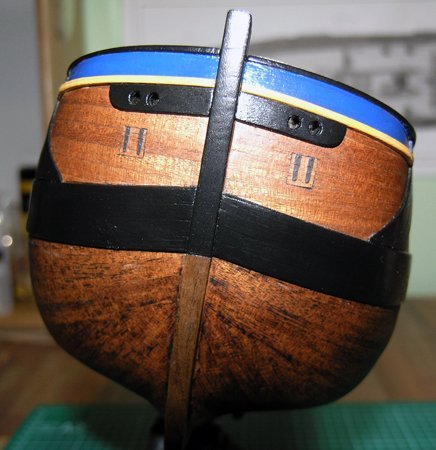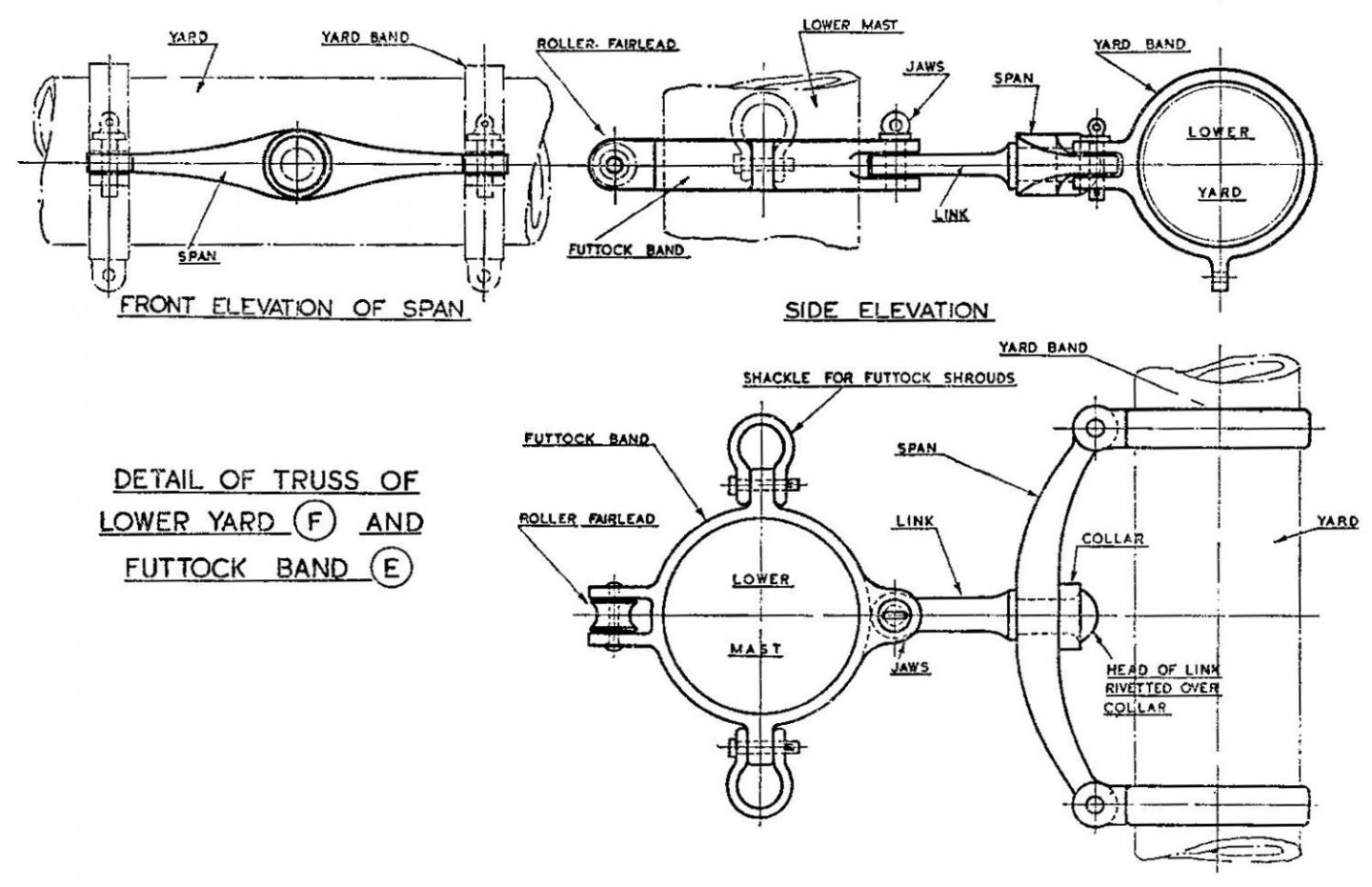-
Posts
5,932 -
Joined
-
Last visited
Content Type
Profiles
Forums
Gallery
Events
Everything posted by BANYAN
-
Everything has been said of your skills and the quality of finish so all I can say is WOW ! I just love all that fine detail in brass. cheers Pat
-
You're making good progress, every improvement no matter how minor adds to better detailing of your model. Peter, if you have Maquardft's AOTS be aware there is a scaling error printed for the masts (page 88) Masts and Yards G4. I spoke with the author whom informed he provided all his drawings at 1:48 but the publishing team rescaled them but in this instance put the wrong scale on the page. shipaholic found and alerted us to this error and may be able to point out any further issues, but I found the rest of the book OK (leaving aside any differences in opinion of some of the fittings, such as bumpkins, etc. cheers pat
- 79 replies
-
- Endeavour
- Artesania Latina
-
(and 1 more)
Tagged with:
-
Very nice work Rob, looks very effective. cheers Pat
- 3,560 replies
-
- clipper
- hull model
-
(and 2 more)
Tagged with:
-
Nice work Peter, looking good! AL's hull is fairly accurate so should make for a nice model. I ignored everything else AL provided and scratch built or 'bashed' most of the other fittings when I built mine. I'll tag along with interest. cheers Pat
- 79 replies
-
- Endeavour
- Artesania Latina
-
(and 1 more)
Tagged with:
-
Your fingers may no longer be strong enough Michael, but your skills have not diminished. Nice work. cheers Pat
-
Hi Peter, I also would be interested. My understanding was Endeavour was coated with 'brown stuff' with a sacrificial timber sheathing. How the sheathing was attached I do not know. The brown stuff was a pitch/tar and straw mix I think - so learning more about this will be of interest. I simulated this on my model of HMB Endeavour by initially coating the bottom with motorcar 'underbody' preservative (bitumen mix). This went on well and dried beautifully and looked just right. However, this was in winter and when the first hot days arrived it went very soft and started to 'slouch' in places 😟. I then scraped and wiped it off which left a nice darkened effect on the walnut planking I used - the net result (accidental finish) worked for me in providing a difference in wood finish to delineate the upper and lower planking while leaving the planking detail still visible). Below are a couple of pictures, but the finish may not be to your taste. cheers Pat
-
Those planes look great Greg, a lot of detail and very neat painting for something so tiny. cheers Pat
- 126 replies
-
- Thetis Bay
- Finished
- (and 4 more)
-
Keith (and Rob), sorry not trying to confuse further, this is offered more as an FYI. The general practice, at least for the British, in this period was to use what was called a neckless to terminate the futtock shrouds at the associated lower mast. For the navy this was a solid iron band with a single (large) or individual eyebolts (usually on the futtock/truss band), or to a long 'U' bolt to which the shrouds attached. For mercantile ships, the practice was to use a chain neckless. Attached are a couple of pics from Underhill "The Masting and Rigging of the Clipper Ship and Ocean Carrier' and G Campbell 'China Tea Clippers'. If a single point was used, it was usually in the form of a 'span shackle'. The single point seems to have been more common and a larger eyebolt would successfully mimic this. cheers Pat
- 3,560 replies
-
- clipper
- hull model
-
(and 2 more)
Tagged with:
-
Welcome back to this restoration Steven, I have been missing these updates. cheers Pat
- 740 replies
-
- Tudor
- restoration
-
(and 4 more)
Tagged with:
-
A good plan Rob, tightly furled sails (harbour fashion) will look great. cheers Pat
- 3,560 replies
-
- clipper
- hull model
-
(and 2 more)
Tagged with:
-

NAIAD 1797 by Bitao - 1:60
BANYAN replied to Bitao's topic in - Build logs for subjects built 1751 - 1800
That is exquisite joinery Bitao; very nicely done. A real treat for the eyes. cheers Pat -
Absolutely stunning detail yet again Keith. How on earth do you polish up these small parts to such a high quality finish, and then maintain that finish? cheers Pat
-
Vlad, may have something to do with the size of the spars, In my Victoria build, the yards used a patent truss for the lower yard, an iron parrel for the topsail yard, and rope parrels for the topgallant and royal yards - confirmed in the Rigging Warrant. The upper mast (top, topgallant and royal) was a single stick so the upper parts were relatively quite thin and fragile, and it appears the royals were rarely used. Rope will have been lighter and kinder to the masts as you have surmised - horses for courses (parrels for masts). cheers Pat
- 3,560 replies
-
- clipper
- hull model
-
(and 2 more)
Tagged with:
-

HMCSS Victoria 1855 by BANYAN - 1:72
BANYAN replied to BANYAN's topic in - Build logs for subjects built 1851 - 1900
Thanks Joe, appreciate your kind comment. cheers Pat- 995 replies
-
- gun dispatch vessel
- victoria
-
(and 2 more)
Tagged with:
-
Those masts are coming along very nicely Rob; they look great. cheers Pat
- 3,560 replies
-
- clipper
- hull model
-
(and 2 more)
Tagged with:
-
Very nicely executed Eberhard; that is quite some detail at that scale. Mate, if you need more cork's I am happy to deplete your supplies of 'Port' cheers Pat
-

HMCSS Victoria 1855 by BANYAN - 1:72
BANYAN replied to BANYAN's topic in - Build logs for subjects built 1851 - 1900
Thanks Druxey and Steven for your kind thoughts; much appreciated. The (box) gutters were my issue; simply could not hold the volume of water which back flowed into my garage ceiling. A lot of people copped a lot worse so not complaining; insurance will sort it. Certainly a 'bewdy' of a storm; I even contemplated starting on an 'Arc' (of sorts) . I am still doing some research for Victoria's rigging in the background, but nothing too serious. cheers Pat- 995 replies
-
- gun dispatch vessel
- victoria
-
(and 2 more)
Tagged with:
-

HMCSS Victoria 1855 by BANYAN - 1:72
BANYAN replied to BANYAN's topic in - Build logs for subjects built 1851 - 1900
Thanks Keith (A) and (B), and Rob for your kind wishes. Things were looking on track until along came some bad weather recently which caused some minor water damage which I am now attending to I hope to get back into the 'saddle' again soon. cheers Pat- 995 replies
-
- gun dispatch vessel
- victoria
-
(and 2 more)
Tagged with:
-
Wise decision Dave, no point hiding all that lovely work in the 'pit'. The steps are looking good. cheers Pat
- 143 replies
-

HMCSS Victoria 1855 by BANYAN - 1:72
BANYAN replied to BANYAN's topic in - Build logs for subjects built 1851 - 1900
Hi Keith, unfortunately yes I stopped work late last year to catch up on too many chores I had been putting off (still working on them) but other issues have also got in the way. I hope to make a restart in February 2022 (Hope being the operative word) cheers Pat- 995 replies
-
- gun dispatch vessel
- victoria
-
(and 2 more)
Tagged with:
-
I'm late to the party again Greg. An interesting subject again; look forward to seeing more. Looks like you are having a lot of fun with that airbrush this time around. cheers Pat
- 126 replies
-
- Thetis Bay
- Finished
- (and 4 more)
-
You're making great progress Keith; those yards are starting to come alive. cheers Pat
About us
Modelshipworld - Advancing Ship Modeling through Research
SSL Secured
Your security is important for us so this Website is SSL-Secured
NRG Mailing Address
Nautical Research Guild
237 South Lincoln Street
Westmont IL, 60559-1917
Model Ship World ® and the MSW logo are Registered Trademarks, and belong to the Nautical Research Guild (United States Patent and Trademark Office: No. 6,929,264 & No. 6,929,274, registered Dec. 20, 2022)
Helpful Links
About the NRG
If you enjoy building ship models that are historically accurate as well as beautiful, then The Nautical Research Guild (NRG) is just right for you.
The Guild is a non-profit educational organization whose mission is to “Advance Ship Modeling Through Research”. We provide support to our members in their efforts to raise the quality of their model ships.
The Nautical Research Guild has published our world-renowned quarterly magazine, The Nautical Research Journal, since 1955. The pages of the Journal are full of articles by accomplished ship modelers who show you how they create those exquisite details on their models, and by maritime historians who show you the correct details to build. The Journal is available in both print and digital editions. Go to the NRG web site (www.thenrg.org) to download a complimentary digital copy of the Journal. The NRG also publishes plan sets, books and compilations of back issues of the Journal and the former Ships in Scale and Model Ship Builder magazines.







